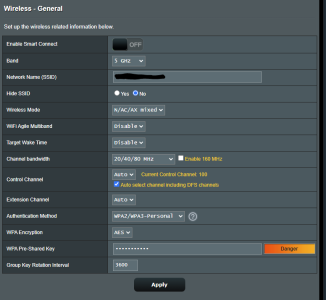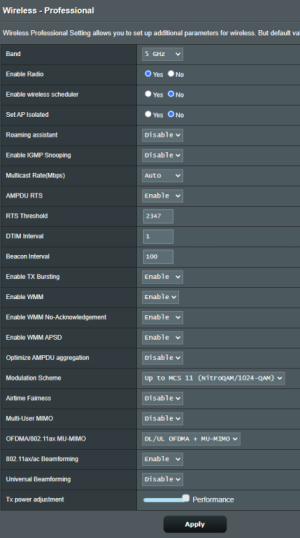ludespeedny
Regular Contributor
I have a 2 devices that are giving me headaches and not sure where to start diagnosing. I have a ax86u, running 3004.388.4, and diversion w/pixelserv (fresh install about a month ago). The 2 devices are a tv and a Raspberry Pi 4, both on 5ghz network (the 2.4 is separate ssid). The tv constantly is throwing a message wifi disconnected about every 5-10 min. The Raspberry Pi works fine till about overnight and then disconnects. The only way to get it reconnected is to reboot the router (rebooting the pi has no effect). It almost seems like the router is not accepting any connections. During this time if I disconnect my pc or phone on wifi I am unable to reconnect till the router is rebooted.
Any suggestions on where to start poking?
Any suggestions on where to start poking?



